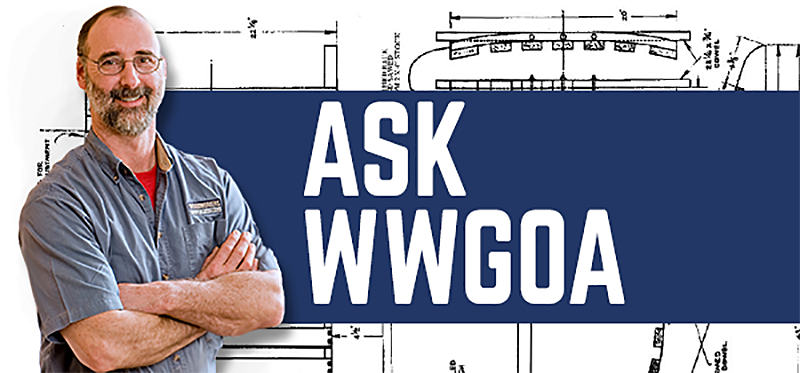“When preparing stiles and rails for raised panel doors, my work is frequently plagued by tear out on the edges. This becomes readily apparent on the long cut, where there is a thin section on the back side of approximately 1/16″ and the edge of the curved section on the face side. The type of material does not appear to be a factor because it has occurred on Poplar, Red Oak and Ash. The cutters appear to be in good shape and sharp.”
Submitted by: Cmur
WWGOA Editor Response:
Make sure your material is the right thickness relative to your cutters. When possible, I prefer to make my doors from 13/16″ material instead of 3/4″, so that I can have more meat on this part of the profile.
Regarding chip out, you should be making a zero clearance fence on your router table before machining your project pieces. This will help tremendously. Do this by getting the cutter to the right height, set the fence in the correct front to back position, then, with the bit running, push the infeed face of your router table fence into the spinning bit. (Of course, don’t do this with the fence if it isn’t made of a material that can be cut by your router bit.) Once you’ve made the zero clearance fence and locked the fence face in place, you’re ready to machine your pieces. Since the fence is supporting the material where the router bit exits the work, you should see much less chipping.
Thank you for your question.
George Vondriska
Managing Editor
Got a woodworking question you need answered? Comment or Email us at editor@wwgoa.com

I would like to see the router bits for the rail and styles and the size for the panel to fit into the frame
Try climb-cutting, This done properly will eliminate tearout. A small power-feed (1/8 to 1/4 hp) is a worthwhile investment. It'll open a whole new world to you as well.
Posted January 12, 2010 // 9:43 AM Be very careful when doing this. You fence MUST be secured so that it does not get sucked into the bit. It took 150 + stitches to repair what was left of my right thumb when that happened to me doing this very thing
Try climb-cutting, This done properly will eliminate tearout. A small power-feed (1/8 to 1/4 hp) is a worthwhile investment. It'll open a whole new world to you as well.
Posted January 12, 2010 // 9:43 AM Be very careful when doing this. You fence MUST be secured so that it does not get sucked into the bit. It took 150 + stitches to repair what was left of my right thumb when that happened to me doing this very thing